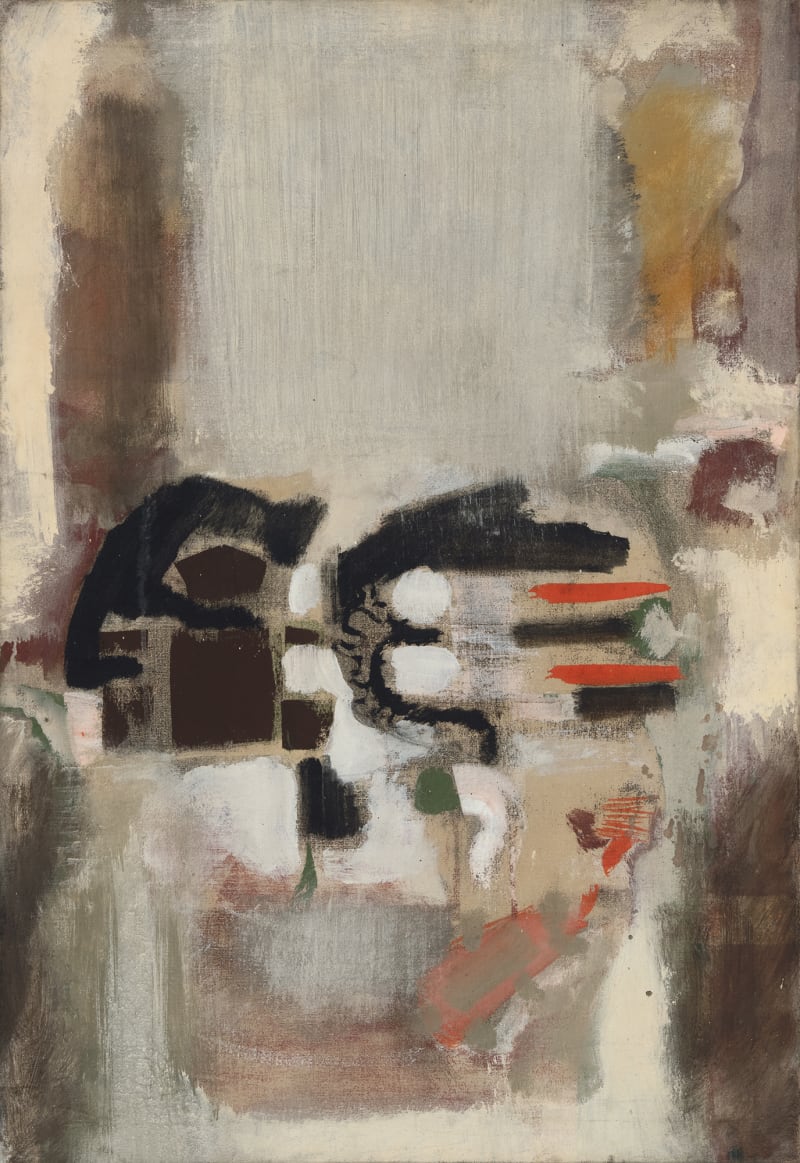![Mark Rothko, Untitled [double-sided], circa 1944](https://artlogic-res.cloudinary.com/w_1000,h_1000,c_limit,f_auto,fl_lossy,q_auto/ws-hollistaggart/usr/images/artists/bio_image_1/168/mark-rothko-htp8989-original.jpg)
Contemplative and evocative, Mark Rothko’s work stands among the greatest creative endeavors of twentieth-century art.
Contemplative and evocative, Mark Rothko’s work stands among the greatest creative endeavors of twentieth-century art. Through highly innovative color and form, he explored grand themes of mythology, tragedy, ecstasy, and death.
Born in Daugavpils, Latvia, Markus Yakovlevich Rothkowitz (he would begin using the name Mark Rothko in 1940) immigrated to Portland, Oregon, at the age of 10. An excellent student, he enrolled at Yale University, but he dropped out without completing his degree and moved to New York City. During the early 1920s he studied with modernist Max Weber at the Art Students League. Later in the decade, he became friends with Milton Avery, whom he regarded as a mentor.
Contemplative and evocative, Mark Rothko’s work stands among the greatest creative endeavors of twentieth-century art. Through highly innovative color and form, he explored grand themes of mythology, tragedy, ecstasy, and death.
Born in Daugavpils, Latvia, Markus Yakovlevich Rothkowitz (he would begin using the name Mark Rothko in 1940) immigrated to Portland, Oregon, at the age of 10. An excellent student, he enrolled at Yale University, but he dropped out without completing his degree and moved to New York City. During the early 1920s he studied with modernist Max Weber at the Art Students League. Later in the decade, he became friends with Milton Avery, whom he regarded as a mentor.
Throughout the 1930s, Rothko painted figuratively, often producing portraits or moody paintings depicting isolated city dwellers. In 1935, he and friend Adolph Gottlieb co-founded the Ten, a group of artists loosely connected by their expressionistic, emotional styles.
In 1947 Rothko began eliminating all references to the observed world from his paintings, and he stopped relying on the drawn, gestural line as a vehicle of expression. In a series of paintings created between 1947 and 1949, called Multiforms, Rothko covered surfaces with irregularly shaped patches of vivid color. Despite the absence of recognizable imagery, these Multiforms shared with the preceding Surrealist pieces a sense of forms evolving or in flux.
By 1949 Rothko would simplify his format to floating planes of intensely realized hues, formulating what is recognized as his mature style: the luminous color-field paintings that would occupy him for the rest of his career. Widely celebrated as among the most profound contributions to twentieth-century art, these later paintings were made possible by Rothko’s decisive turn to nonrepresentational abstraction heralded by the Multiforms. In the catalogue essay for his important 1978 retrospective at the Guggenheim—an exhibition that featured this painting—curator Diane Waldman notes that during this era that Rothko began “to formulate his mature style. He broke with Surrealism and purged the remnants of this style from his work,” and established “a striking departure into pure abstraction.” (1)
Internationally acclaimed but depressed and physically weak, Mark Rothko committed suicide in 1970.
1. Diane Waldman, “Mark Rothko: The Farther Shore of Art,” in Mark Rothko: A Retrospective (New York: Solomon R. Guggenheim Foundation, 1978), p. 49.










![Mark Rothko, Untitled [double-sided], circa 1944](https://artlogic-res.cloudinary.com/w_800,c_limit,f_auto,fl_lossy,q_auto/artlogicstorage/htg1979/images/view/b7a8e9d2d13101ffbf60536d83767f9bj/hollistaggart-mark-rothko-untitled-double-sided-circa-1944.jpg)





